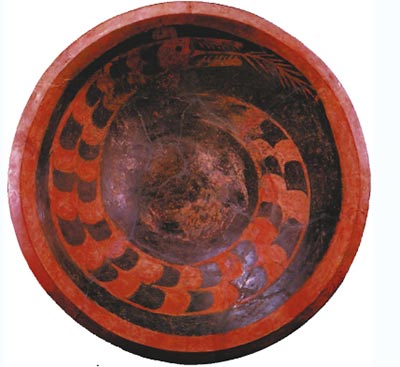Humble fields belie millennia of history at Taosi relics site
 |
|
A color pottery plate with dragon pattern excavated at the Taosi ancient relics site. [Photo provided to China Daily] |
Editor's note: The Xiangfen county government has applied to the State Administration of Cultural Heritage for permission to build a national-level archaeological park on the Taosi ancient relics site.
Of all the places we visited in Shanxi, the one that made the biggest impression on me was the Taosi relics site. Who would have thought that a civilization that flourished thousands of years ago would lie beneath this province known for its coal production?
We stumbled off the bus to a formal welcome of several uniformed police officers standing to attention beside four electric golf carts. A wooden sign beside the road informed us in fresh gold characters that we were there to visit Taosi, or the clay temple. Looking around, we saw no temples but were surrounded by farmland sparsely interspersed by houses.
With only the sound of our chatter and the quiet whirring of the electric vehicles, we set off down the road between fields of faded greenery and cornhusks and arrived at a nondescript building where a woman stood wearing a microphone.
That is when things got interesting.
At the insistence of our guide, we went inside the dark building, wondering why we were there, and gathered around a model of tiny brown houses surrounded by shrubbery that resembled the dullness of the scenery outside, despite a string of LED lights. It was a model of the Taosi site, with labels marking the residential area of the nobility, the residential area of the commoners and the location of the observatory.
The simple model represents the site that some archaeologists argue was the capital of the legendary Emperor Yao, a mythical figure who most scholars believe to be fictional. According to Confucian texts, Yao was one of the sage emperors, a group of mythological rulers who existed before the Xia, commonly accepted as the first Chinese dynasty. The texts extol the virtues of these sage kings, who were supposed to have been paragons of benevolence and moral fiber.














